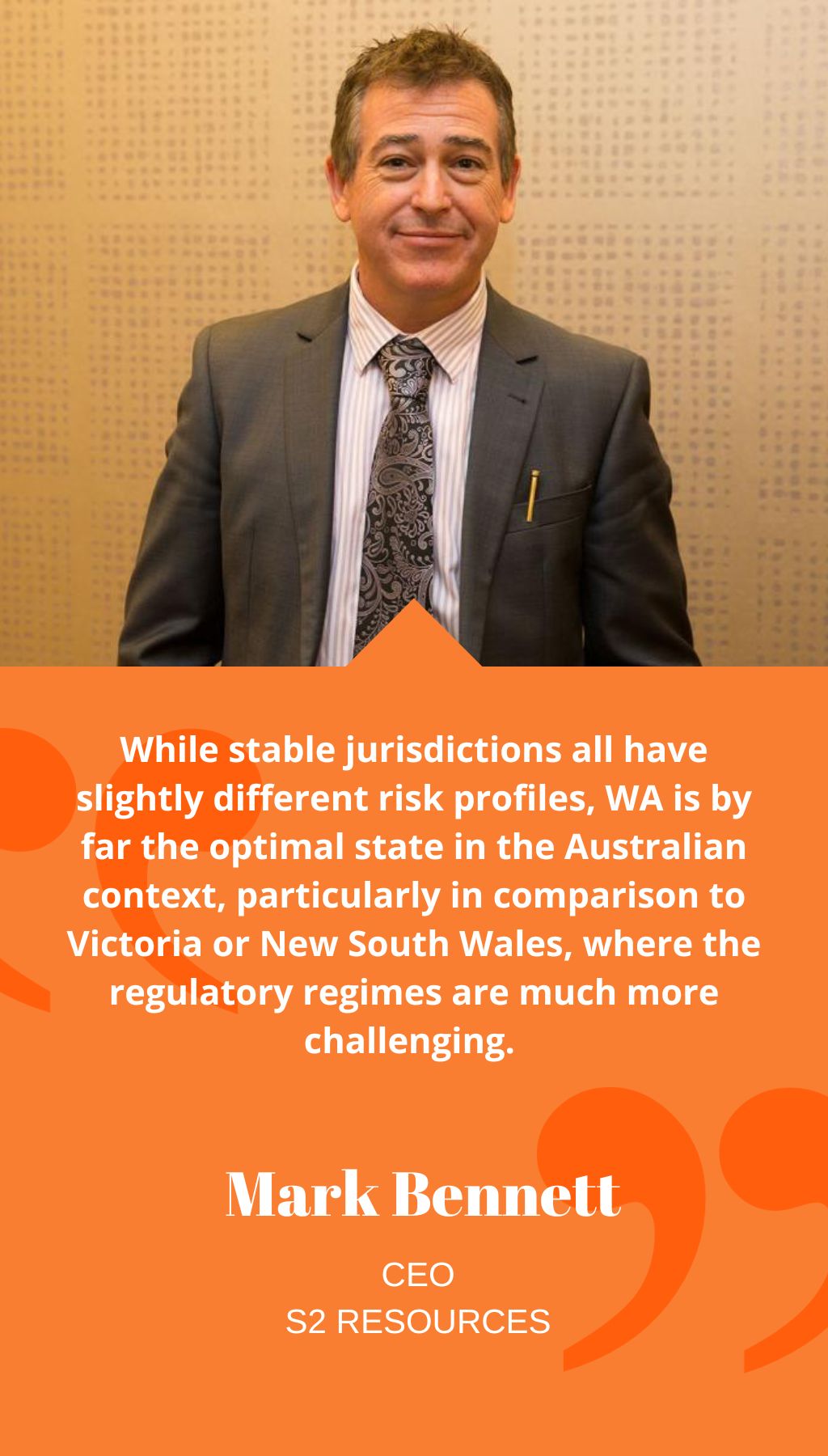
- Australia | 29 April 2017

Can you explain how S2 Resources was created and what advantages it enjoys?
Certainly. S2 Resources was born out of the acquisition of Sirius Resources by Independence Group for A$1.8 billion in September 2015. Prior to the acquisition, several exploration projects were earmarked as the next point of growth after the success of the Nova project. As part of the deal with Independence Group, S2 Resources was spun out of Sirius with A$20 million of funding and its pick of Sirius personnel to join the new company. This was an advantageous move as unlike most junior companies, S2 Resources did not face a lack of funding to explore. Additionally, Sirius shareholders received a pro-rata allocation of shares in S2 Resources, resulting in a very solid top 20 or 30 register of shareholders who are comfortable with the company’s strategy, giving S2 Resources the freedom to pursue its objectives.
What is the strategy behind S2 Resources’ operations in Scandinavia?
S2 Resources’ project in Finland is located next to Europe’s largest gold mine, and the company has been quietly accumulating ground with the view of making it its next active project. S2 Resources owns about 40% of the surrounding ground, and a Canadian company’s recent discovery in the area has put Finland in the spotlight. In northern Sweden, S2 Resources has been actively exploring in the home territory of the Swedish base metal company New Boliden. The company has accumulated a major tenement holding in what is essentially a world-class base metal district. S2 Resources is now the second-largest holder of mining tenure in Sweden, and the company is using new exploration techniques, which have identified over 100 anomalies, of which they expect to drill about 10 per year.
How does S2 Resources’ operations in Scandinavia compare to its operations in Western Australia (WA)?
S2 Resources’ operations are all focused on stable jurisdictions. While stable jurisdictions all have slightly different risk profiles, WA is by far the optimal state in the Australian context, particularly in comparison to Victoria or New South Wales, where the regulatory regimes are much more challenging. S2 Resources’ work on the Nova project exemplifies the ease of the WA framework: it only took the company two and half years from the first drill hole to beginning mining. The disadvantage of WA is the fierce competition, making it harder to obtain unexplored ground. In contrast, in Scandinavia, there is greater exploration opportunity. While Scandinavia achieves world standards in every category, the mining industry has a less significant presence there, meaning that some of the government authorities are less practiced with permitting processes, resulting in a longer process. Geographically speaking, while sourcing water is an issue in WA, lakes and streams are plentiful in Sweden, making water management critical to ensure potential pollutants do not enter local water sources. In terms of infrastructure, provisioning of power, 4G network connectivity, and roads, Scandinavia is excellent, despite parts of it being north of the Arctic Circle, making it inexpensive to operate in Sweden as it is in WA.
How does S2 Resources approach its negotiations in regards to native title rights?
S2 Resources believes that engagement with local people early is key to demonstrating how the company’s actions will not necessarily be disruptive and might actually be beneficial. The company did a native title deal in WA in record time because of the way they went about it. In many ways, smaller companies are better positioned to negotiate successfully because interaction is from the top and not via a mid-level manager. Local communities appreciate this approach partly because it is more efficient, but more importantly because it demonstrates a degree of respect, which in turn creates trust. It is much easier to talk and reach an agreement in this manner, whereas big companies that take a more corporate approach encounter greater difficulty.














